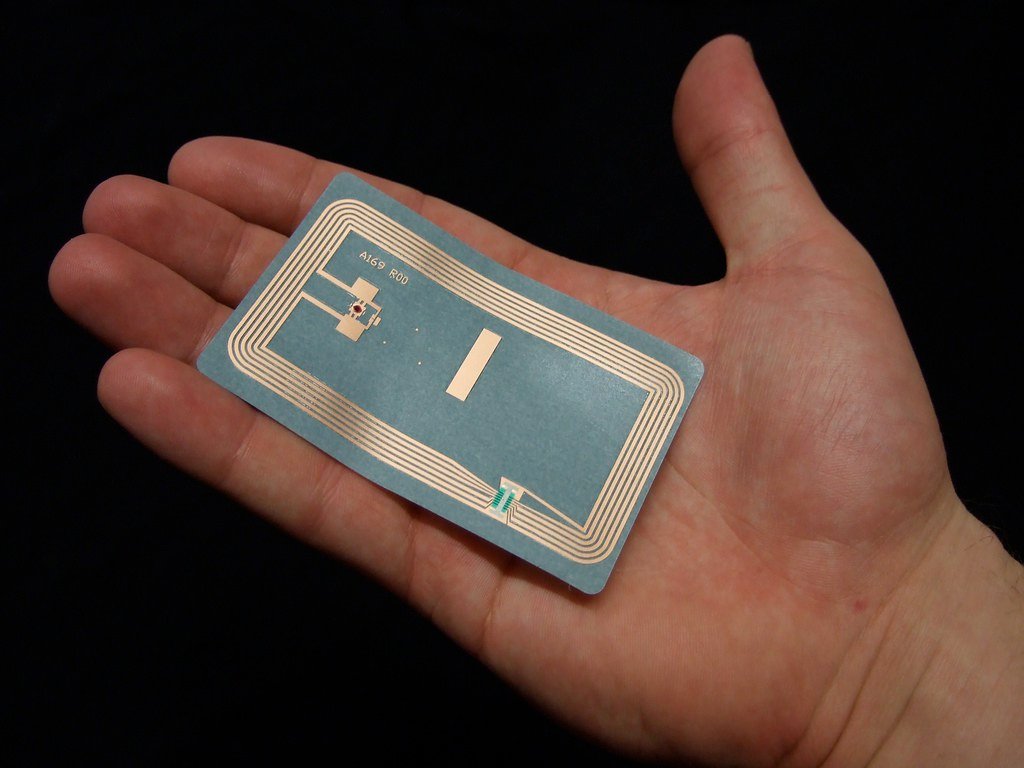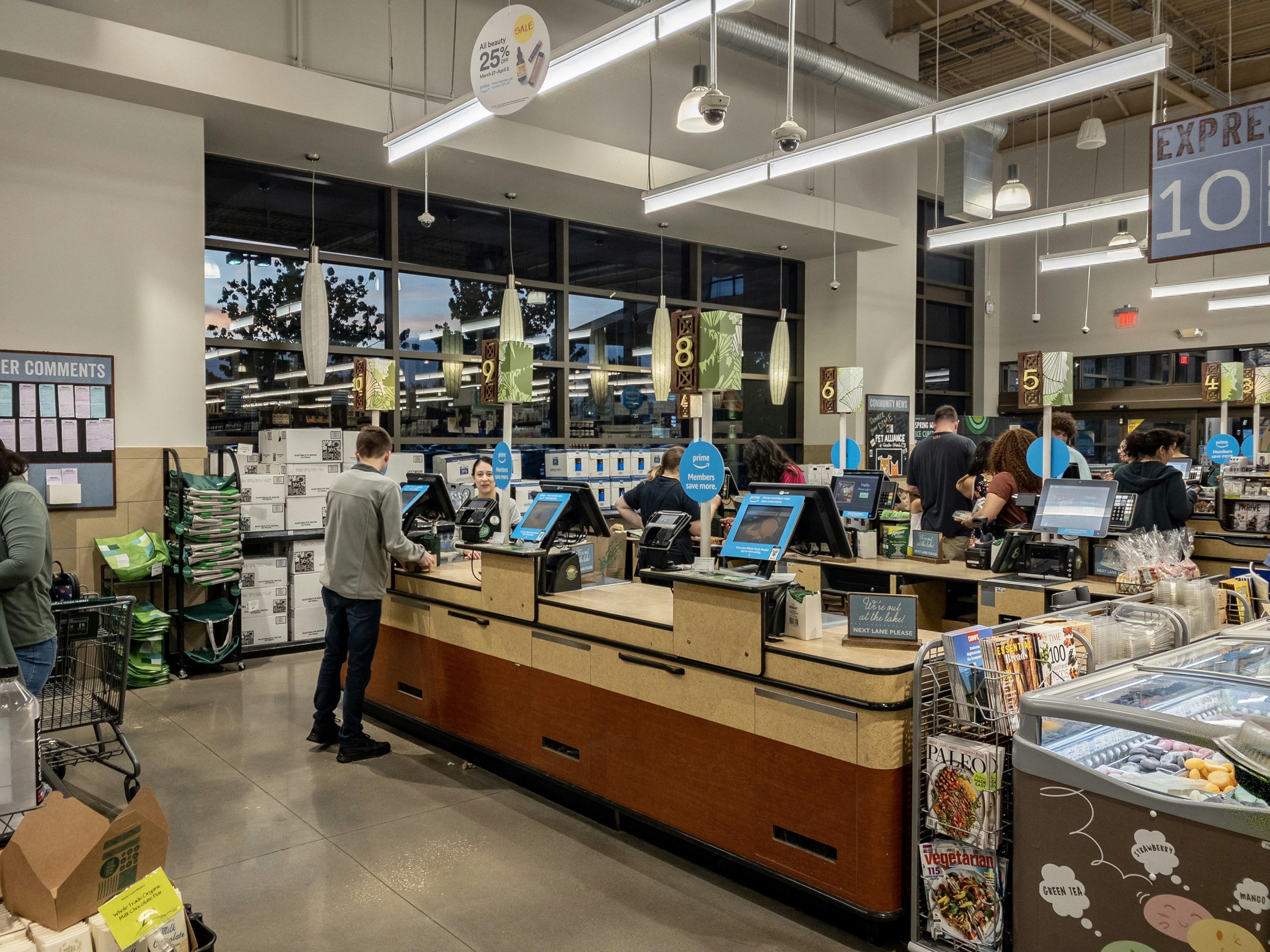Introduction to NFC and QR Codes
Near Field Communication (NFC) and Quick Response (QR) codes are two widely recognized technologies that facilitate data transfer and interaction across a multitude of applications. NFC is a short-range wireless connectivity standard that enables devices to exchange information simply by being in close proximity, typically within a radius of a few centimeters. This technology is commonly used in contactless payments, electronic ticketing, and pairing Bluetooth devices, making it increasingly popular in everyday transactions and interactions.
On the other hand, QR codes are two-dimensional barcodes that can store a variety of information, including URLs, text, and contact details. QR codes can be scanned by smartphones or compatible devices, allowing users to access information quickly and conveniently. Their versatility has made them prevalent in advertising, product packaging, and event management, where they provide a simple solution for information access without the need for direct contact.
The fundamental principles behind NFC and QR codes are distinct. NFC relies on electromagnetic fields for short-range communication, while QR codes function through optical recognition and decoding. Consequently, NFC technology often requires dedicated hardware, whereas QR codes predominantly depend on camera-equipped devices, permitting greater accessibility as most smartphones come with built-in scanning capabilities.
In various contexts, NFC and QR codes serve different purposes and appeal to distinct user preferences. NFC’s convenience shines in scenarios that require quick and seamless interactions, such as mobile payments, while QR codes excel in applications where more information needs to be conveyed efficiently. Understanding the strengths and limitations of each technology is essential for determining the most suitable choice for specific needs, prompting an in-depth comparison of their advantages and potential drawbacks.
How NFC Works
NFC, or Near Field Communication, is a short-range wireless technology that enables data exchange between devices when they are brought into close proximity, generally within a range of 4 centimeters. Its operational standards are defined by the ISO/IEC 14443 and ISO/IEC 18092 benchmarks, ensuring that devices can communicate seamlessly across different platforms. NFC operates in two primary modes: card emulation mode and peer-to-peer mode. In card emulation mode, an NFC-enabled device can function like a contactless smart card, allowing users to make transactions or access information without the need for physical contact. Peer-to-peer mode allows two NFC-capable devices to exchange data, such as files or contact information, simply by being close together.
The process of data exchange using NFC is straightforward. A transmitting device emits an electromagnetic field that activates the receiving device, enabling it to communicate without the need for any manual pairing or configuration. This simplicity of operation is one of the key advantages of NFC, making it user-friendly and quick. The established communication is fast, typically taking only a fraction of a second, which is crucial in applications like mobile payments, where efficiency is paramount.
NFC technology has found its way into various applications, demonstrating its versatility and effectiveness. One of the most prominent uses is in mobile payment systems such as Apple Pay, Google Pay, and Samsung Pay. These platforms allow users to make transactions effortlessly by tapping their smartphones on compatible terminals. Additionally, NFC is utilized in ticketing systems for public transit, sporting events, and concert admission, where users can simply scan their devices to gain entry. Other applications include sharing contact information, pairing Bluetooth devices, and accessing smart tags for automated tasks. Overall, NFC’s ease of use and swift communication capabilities make it a valuable tool for diverse digital interactions.
Understanding QR Codes
QR codes, short for Quick Response codes, are two-dimensional barcodes that can be scanned using a smartphone camera or a QR code reader. Originating in Japan in the mid-1990s, they were initially designed for tracking automotive parts but have since evolved into a versatile tool used across various sectors. The structure of a QR code consists of black squares arranged on a white grid, enabling it to store a significant amount of data compared to traditional barcodes.
Generating a QR code is a straightforward process. Users can utilize various online generators, where they input the desired information—such as text, URLs, or contact details. After processing, the generator creates an image file of the QR code, which can then be printed or shared digitally. Scanning a QR code is equally uncomplicated; users simply open their camera application or a dedicated QR scanning app, direct it at the code, and the encoded information will instantly be retrieved and displayed on their device.
The applications of QR codes are vast and varied, making them a preferred choice in marketing and retail. For instance, businesses use them to enhance customer engagement by linking to promotional content, product information, or digital storefronts. In restaurants, QR codes are commonly employed to provide contactless menus, enabling patrons to browse options without physical interaction. Furthermore, QR codes are increasingly utilized in events for ticketing solutions, allowing attendees to gain entry simply by scanning their code at the venue.
Additionally, they can store different types of data, including URLs, phone numbers, email addresses, and even Wi-Fi credentials, which adds to their adaptability. The ease of use and accessibility of QR codes ensures that they remain an invaluable asset across numerous industries, enhancing customer convenience and fostering interactive experiences.
Comparing Usability: NFC vs. QR Codes
When evaluating the usability of NFC (Near Field Communication) and QR codes (Quick Response codes), several factors come into play that influence user experience and convenience. Both technologies aim to streamline interactions, yet their operational methodologies present distinct advantages and challenges.
NFC operates on a simple premise: users only need to bring their NFC-enabled device within a few centimeters of an NFC tag to initiate communication. This immediacy makes it incredibly user-friendly, particularly in environments like retail or public transport where speed is crucial. Users often appreciate the swift exchange of information, as NFC does not require direct line-of-sight or complex steps. For instance, tapping a smartphone on an NFC-enabled payment terminal can complete transactions effortlessly, enhancing the overall consumer experience.
In contrast, QR codes require users to point their smartphone’s camera at the code, which can introduce a slight delay and potential for user error, especially in low-light conditions or if there is any obstruction. Scanning a QR code often necessitates additional steps, such as opening a specific app or navigating to a web browser, which can deter usability. However, QR codes hold advantages in terms of versatility; they can be printed and displayed in various locations, allowing users to interact with physical products, advertisements, or even business cards with relative ease.
Both technologies have their appropriate contexts. NFC is generally favored in scenarios necessitating rapid engagement, such as ticketing or payments, while QR codes excel in advertising and information dissemination due to their adaptability and minimal infrastructure requirements. Ultimately, the choice between NFC and QR codes hinges on the specific needs of the user experience and the particular constraints of each situation.
Security Features of Each Technology
Security is a paramount concern for both NFC (Near Field Communication) and QR codes, particularly in the context of sensitive transactions. Each technology presents its own set of vulnerabilities and protective measures that can significantly influence their overall effectiveness in safeguarding user data.
NFC technology benefits from its inherent encryption capabilities and secure transaction protocols. The proximity requirement of NFC—communication occurs only when devices are within a short distance—adds an additional layer of security, making unauthorized interception exceedingly challenging. Furthermore, NFC devices often utilize secure elements to store sensitive information, which are tamper-resistant and provide a fortified environment for processing transactions. However, potential threats such as relay attacks and eavesdropping can compromise NFC transactions if appropriate security measures are not in place. By implementing strong authentication processes, including tokenization and multifactor authentication, users can mitigate these risks effectively.
In contrast, QR codes, while more accessible due to their easily scannable nature, face distinct security challenges. QR codes can be altered or created by malicious entities, leading users to fraudulent websites or harmful applications if scanned. The static nature of QR codes means that they do not incorporate built-in encryption, which can expose users to phishing attacks or data theft. To counteract these security vulnerabilities, various measures can be adopted, such as employing dynamic QR codes, which can be updated and monitored for suspicious activity, and using URL shortening services that offer redirection while adding layers of security checks.
Ultimately, both NFC and QR codes have their strengths and weaknesses concerning security. NFC presents a more secure environment due to its proximity requirement and encryption features, while QR codes require vigilant user practices for safe implementation. Understanding these differences is essential for selecting the optimal technology for your specific needs.
Cost and Implementation Considerations
When evaluating the financial implications of adopting NFC (Near Field Communication) and QR code (Quick Response code) technologies, it is essential to consider various factors, including hardware requirements, implementation processes, and long-term maintenance costs. Both technologies present distinct advantages and challenges which can impact the overall expenditure for businesses.
Starting with hardware requirements, QR codes have a significant advantage due to their low-cost structure. Businesses can generate QR codes using free online tools, requiring only a smartphone or tablet with a camera for scanning. This makes them accessible for various organizations, especially small enterprises with limited budgets. In contrast, NFC technology necessitates specialized hardware, including NFC-enabled devices and readers, which can result in higher upfront investment costs.
In terms of implementation processes, QR codes generally entail a simpler deployment procedure. They can be easily printed on marketing materials, products, or even displayed digitally. Businesses can implement these codes without the need for specialized technical staff. Conversely, implementing NFC technology often involves more complex integration issues, requiring professional services for proper setup and potentially higher costs associated with training employees on the technology’s usage.
Long-term maintenance also factors into the cost analysis. QR codes are relatively maintenance-free, as they do not rely on any specific infrastructure; as long as the printed code is intact, it remains functional. NFC devices, on the other hand, may require regular hardware updates and maintenance checks, leading to ongoing operational costs that can accumulate over time.
Scalability and ongoing support are critical components for businesses to consider. While both technologies can scale, QR codes provide greater flexibility due to their ease of use and minimal requirement for specialized equipment. In contrast, NFC solutions may necessitate more significant investment in infrastructure as businesses grow. Therefore, it is crucial for organizations to analyze their unique needs and capabilities before committing to either technology. This assessment ensures that their choice aligns with their operational goals and budgetary constraints.
Integration with Other Technologies
When considering the integration capabilities of Near Field Communication (NFC) and Quick Response (QR) codes, both technologies offer distinct advantages depending on their application context. NFC, a short-range wireless communication technology, is commonly integrated with mobile applications, enabling smooth transactions and data exchanges. For instance, mobile wallets such as Apple Pay and Google Wallet use NFC technology to facilitate contactless payments seamlessly. This integration enhances user convenience and security during monetary transactions, allowing users to pay with a mere tap of their device.
On the other hand, QR codes present a different paradigm of integration. They can be easily incorporated into varied platforms, including websites, email marketing campaigns, and print advertisements. When scanned, QR codes can redirect users to specific landing pages, initiate app downloads, or even connect to Wi-Fi networks. This versatility allows businesses to merge offline and online experiences effectively, serving as a gateway to digital engagement while promoting customer interaction. Their flexibility extends to being used in various industries, from retail and hospitality to education and healthcare, showcasing a broad range of potential applications.
Furthermore, both NFC and QR codes can interface with Customer Relationship Management (CRM) systems to enhance data collection and customer insights. NFC can capture customer preferences quickly when they tap their devices against a reader, providing businesses with immediate analytical data. In comparison, QR codes can track scanning metrics allowing businesses to gauge engagement effectiveness. As such, companies can leverage either technology to streamline operations and enhance customer relationship management by gaining deeper insights into consumer behavior.
As technology evolves, both NFC and QR codes demonstrate substantial potential for further innovations. This adaptability implies that businesses should carefully assess their specific needs and customer preferences to leverage the most suitable integration for their operational strategies.
Real-World Case Studies
To better understand the practical applications of Near Field Communication (NFC) and Quick Response (QR) codes, we can examine several case studies across different industries. These examples will highlight the strengths and weaknesses of both technologies in real-world settings.
In the retail industry, a popular clothing brand implemented NFC technology by embedding NFC chips in their apparel tags. This initiative allowed customers to simply tap their smartphones against the tags to receive additional information about the fabric and care instructions, read reviews, and even access styling tips. Not only did this enhance customer engagement, but it also drove online traffic to the brand’s website. The direct interaction created by NFC helped the brand stand out in a competitive marketplace.
On the other hand, a large restaurant chain adopted QR codes as a contactless menu solution during the pandemic. Customers were able to scan the code with their smartphones to access the menu digitally, which significantly reduced physical contact and improved safety. This implementation proved cost-effective and easy to execute, as it required no additional hardware. Moreover, the QR code system streamlined the dining experience by enabling customers to place orders and make payments from their devices, which further optimized operational efficiency.
Another example comes from the event management sector, where NFC wristbands were utilized for a major music festival. Attendees could use the wristband for entry, cashless payments, and to link their social media accounts. This seamless integration improved the overall festival experience, showcasing NFC’s strength in enhancing user convenience and security.
Conversely, a smart city initiative in urban transportation utilized QR codes on public transit systems. Passengers could scan the codes to access real-time schedules and route maps. While effective, this implementation revealed some limitations regarding internet connectivity, as users with poor reception had trouble accessing information. Such challenges underscore the differences in usability between the two technologies and their suitability for varying contexts.
Conclusion: Choosing the Right Technology for Your Needs
In evaluating NFC (Near Field Communication) and QR codes (Quick Response codes), it is imperative to consider user demographics, specific use cases, and business objectives to make an informed decision. Each technology presents distinct advantages that cater to different requirements.
NFC, characterized by its ability to facilitate seamless interactions through close-range communication, tends to appeal more to demographic groups that are tech-savvy and frequently engage with mobile devices. Its primary strengths lie in providing contactless payment solutions, secure access control, and enhanced user experiences, which can be particularly advantageous in retail and event management. Businesses that prioritize user convenience and interactive experiences may find NFC technology to be a more suitable option. For example, high-end retailers may leverage NFC to streamline customer transactions through tap-to-pay systems, enhancing the checkout experience.
On the other hand, QR codes present a universal solution that requires minimal technological infrastructure, making them accessible to a broader range of users. Their versatility allows for easy integration in marketing materials, enabling companies to direct consumers to websites or digital content with a simple scan. This technology is particularly advantageous in scenarios where cost-effectiveness and immediate information dissemination are prioritized, such as in advertising or product packaging. Furthermore, with smartphone penetration rates continuing to rise globally, businesses of all types can effectively implement QR codes without needing specialized hardware.
Ultimately, the decision between NFC and QR codes should reflect the specific needs of the target audience and the intended application. By carefully assessing factors such as user comfort, industry trends, and the desired interaction level, businesses can align their technology choice with their objectives, ensuring an enhanced user experience and potential growth in engagement or sales.
© barcodly.com- All rights reserved





